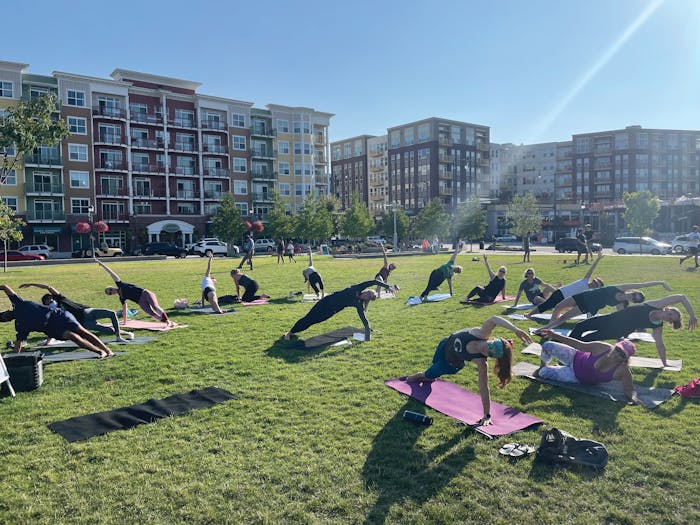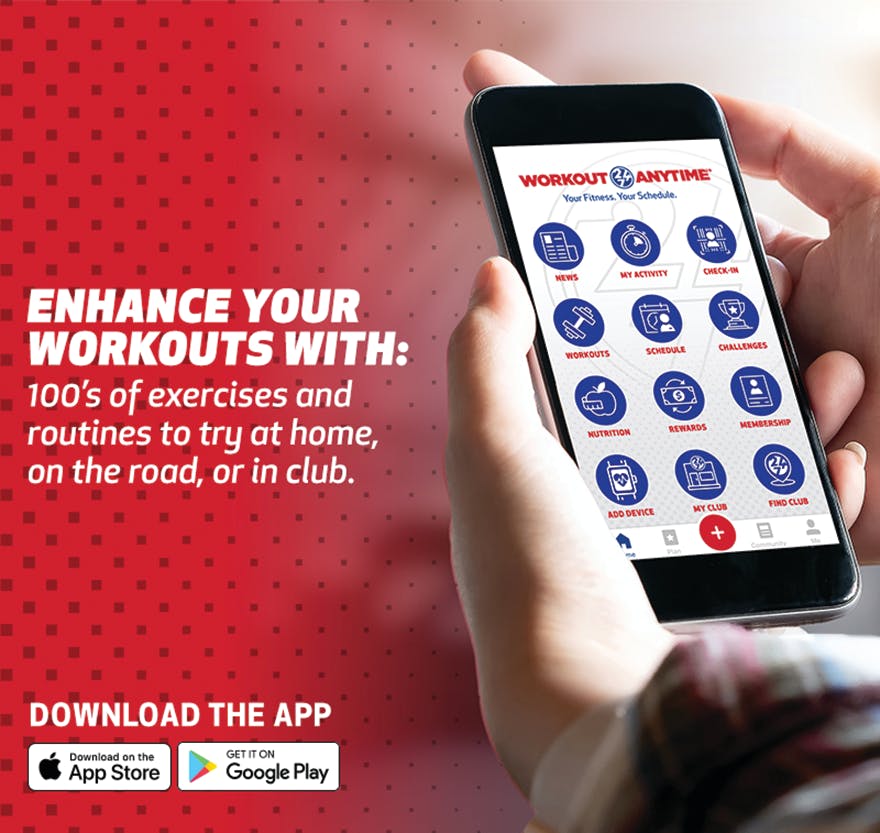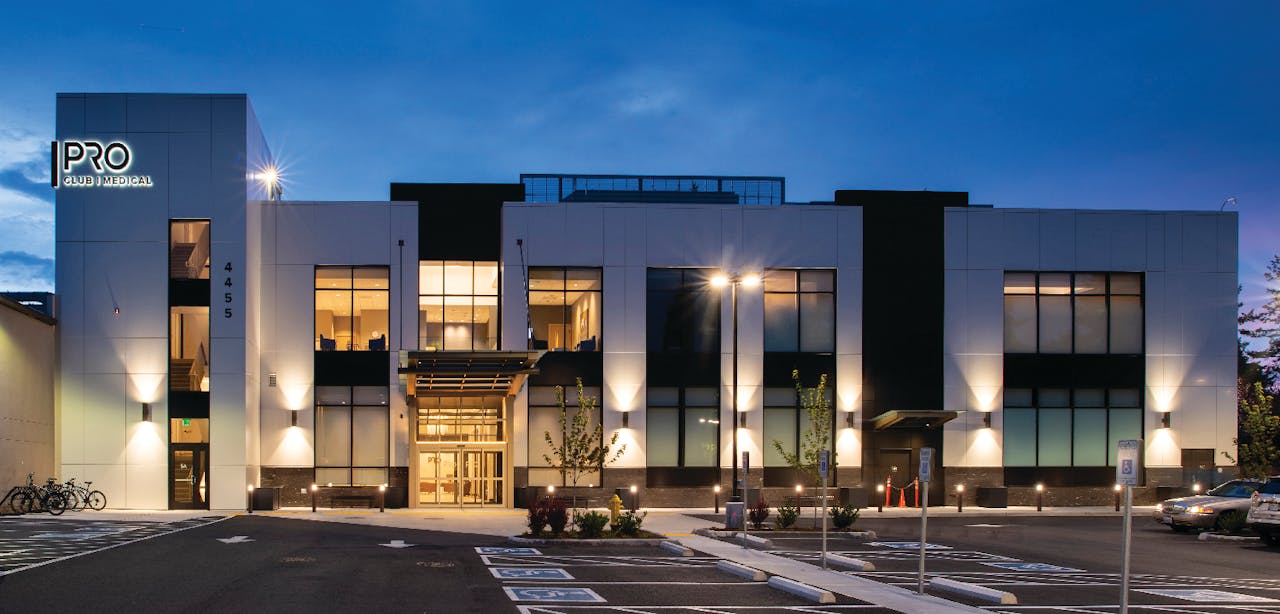Surviving the Pandemic: Which Hybrid Fitness Options Will Live On?

One-quarter of health and fitness facilities closed within the first 22 months of the COVID pandemic, according to the IHRSA. Meanwhile, a report from web-based market data and intelligence firm Apptopia says that although people were showing up less at fitness facilities, they were downloading apps. In 2021 alone, fitness apps racked up more than 400 million downloads.
“An app that allows me, as one of your members, to consume digital programming, keep track of my wearables, all that stuff? That is now table stakes. You have to have those things,” says Greg Maurer, who has been working in the fitness industry for nearly 40 years, the last several as the vice president of fitness training and education for Workout Anytime.
Virtual fitness options such as video on demand, live instructor one-on-one sessions and live instructor-led digital classes used to be more peripheral, according to Maurer, but not anymore. “The consumer is going to have an expectation,” he says. “All of that existed prior to the pandemic, but went from being fringe to now it’s not fringe at all.”
 Pocket personal trainer
Pocket personal trainer
“At the very least, I think everybody needs a robust app,” Maurer says. “I think that should include the ability to design my own exercise program, the ability to pick preset workouts that are video-guided, so that I literally have a personal trainer in my pocket.”
Workout Anytime, the 24/7 fitness franchise with 180 locations mostly in the southeast U.S., offers app access to every new member. That’s because, among other benefits, it helps create a relationship with customers that can keep up with their life, and doesn’t end at the club exit. Members can design their workout with help from a library of 4,000 exercises. Users can also choose to do more through the app, like adding a $6-per-month service with video-on-demand workouts and a potent nutrition app.
The franchise is partnered with hybrid training software maker Virtual Gym to offer members amenities such as the ability to check in using the app, record exercises, track progress, create hybrid workouts for home or at the club, access 3D-animated exercise videos, utilize wearable integrations and more. Maurer says it made sense for the franchise — whose model has a 50 percent smaller footprint than rival concept clubs Crunch Fitness and Planet Fitness — to bring in a third party rather than try to produce its own content. “Getting it right can be expensive,” he says. “What you don’t want to do is spend a whole lot of money on the wrong thing.”
 [Photo courtesy of PRO Club]Partnering with parks
[Photo courtesy of PRO Club]Partnering with parks
On the other side of the United States, a luxury fitness club in Washington state started livestreaming within 48 hours of the state’s first stay-at-home order in March 2020. Staci Alden, who was the group fitness manager at PRO Club for 10 years, said she was thankful for the trust of club owners who allowed her to move quickly to get members served. “I just had the pleasure of the freedom of working for a private company to get creative, to be really nimble,” she says. “So when the pandemic happened, I didn’t ask any questions because I knew they trusted me, and I could just go for it. It was craziness. And the team just rallied.”
Like many others, PRO Club began its livestreaming on Facebook but has since moved to Zoom, which can provide more data and insight on viewers. Alden says other streaming services, including TalentHack and Vimeo, can go further to “where we can actually sell our offering, whether it be livestream or on demand, and then upsell using private sessions. PRO Club being an older club, we’ve gone as far as Zoom and we kind of got stuck there. But we’ve been doing well with what we have.”
Alden says managers who can should get innovative with their ideas and be brave. She says prior to the pandemic, PRO Club had explored working with the local parks department on some combination fitness events, but at that time, the city had pitched a per-class fee of $150. “And we were like, well, that’s a lot,” Alden says. Adding up the cost of paying the instructor and paying for space, Alden says it wasn’t feasible.
When the pandemic arrived, Alden reached out to the parks department again and came up with a plan for PRO Club to hold classes on parks property, which was a step up from the parking-lot views PRO members were getting during hybrid outdoor classes. “I never thought this would happen, but we revenue share,” she says. “We charge through their site, so we get members and nonmembers who attend these outdoor classes, and then it gives us really good exposure.”
PRO Club staff follow the city’s COVID-19 protocols because they’ve been slightly different than the policies at PRO, and the relationship has been great, Alden says. “It’s given us a lot of opportunity to show that we’re working with people in the community, and then we’re also doing events outdoors, promoting our club and getting memberships through that, too.”
Alden moved on this year from PRO Club to a new endeavor with Guided Fitness, a company that programs group fitness classes and personal training for apartment communities, senior centers, hotels and their residents. “It’s a younger company, and they kind of took off during COVID,” Alden says. “They’re in person, they’re online, they’re all over the U.S. It’s absolutely hybrid fitness, so I’m excited. I’m looking at some of the software they’re using that they made for themselves, and the ecosystem that I see the future being, it’s definitely possible.”
 [Image courtesty of PROclub.com]The member experience is vital
[Image courtesty of PROclub.com]The member experience is vital
No matter the swankiness or speed of your concept, professionals say overseeing fitness clubs is ultimately a customer service gig.
Before the pandemic, Carl Boothby was running operations for large digital marketing companies. He says that while gyms are not yet his expertise, marketing and customer service have been for about two decades. The pandemic pushed Boothby’s life in a new direction when he got the opportunity to buy four Workout Anytime franchise locations in northeastern Florida. He said he saw the value of the Workout Anytime app right away. “Look, we don’t have basketball courts, or saunas, or anything like that,” Boothby says. “Our value proposition is very simple. We have high-quality equipment at low prices with an extraordinarily clean environment and the friendliest staff you’ll ever find. We’re not the biggest, we don’t have all the bells and whistles, so the member experience is so critical, and the app is delivering on that for us in a lot of different ways.”
Even with more members joining online, Maurer of Workout Anytime cautions no amount of bells and whistles can out-ring an in-person connection. “We can’t get lost in digital. That’s not who we are. We are not Apple. We run health clubs, that’s still the center. Remember, it is hybrid.”






